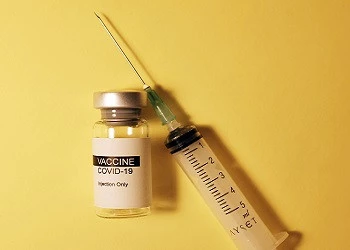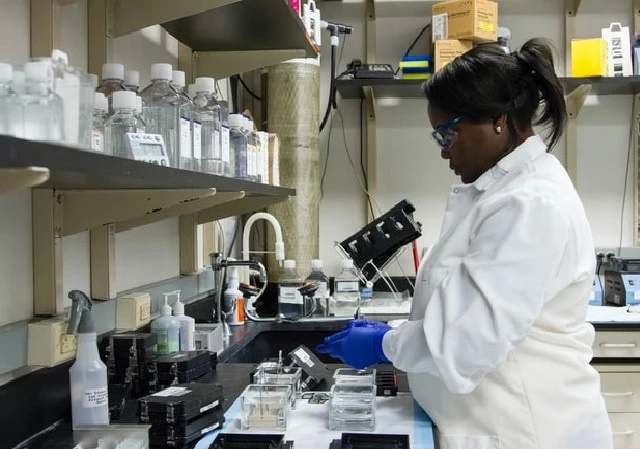Drugs and Products to Watch in 2018: Part 2
Gene editing and heart failure devices: Regina Au guides us through key developments in 2018
Add bookmarkYou may remember reading Regina's previous article about immuno-oncology in 2018. Regina is back again to discuss key developments in gene editing and heart failure devices.
Gene Editing - CRISPR Technology
CRISPR technology or gene editing is interesting because it is used both as a research tool to advance the knowledge of diseases, by discovering gene mutations specific to diseases and as a form of potential treatment by editing specific gene mutations.
SEE ALSO: A complete guide to CRISPR Cas9
CRISPR/Cas9 was developed to edit genes easier, cutting DNA into two triggers both non-homologous end joining (NHEJ) and Homology Directed Repair (HDR) where NHEJ can lead to unwanted off-target side effects that are permanent even though the HDR may be the predominant pathway that is used by scientist. This led researchers to search for safer alternatives in avoiding a DNA break in the following methods:
- Kill Switch - UC Berkeley and UC San Francisco, are focusing on a molecule that limits Cas9 activity once the desired editing is complete.
- Non-viral Delivery Vehicle - Another Berkeley team is using gold nanoparticles to deliver CRISPR/Cas9 into mice to correct the genetic mutation that causes Duchenne muscular dystrophy and hopefully will reduce the off-target effects.
MIT researchers used nanoparticles to snip out a certain gene that regulates cholesterol in about 80 percent of liver cells in the mice. In humans, a mutation in that gene can cause a rare disorder called dominant familial hypercholesterolemia.
The advantages of using nanoparticles over viruses as a delivery system for CRISPR/Cas9 are in patients that might have antibodies to a particular virus, resulting in the treatment being less effective or even triggering a harmful immune response. Patients could also develop antibodies to a virus once it is used and therefore, this method can't be used again. - RNA Edits - Scientist from the Broad Institute scientists have devised a way to edit RNA instead of DNA making edits reversible vs. DNA where cuts are permanent. The system, called REPAIR (RNA Editing for Programmable A to I Replacement) can edit single nucleosides, or the “letters” that make up the RNA helix. More, specifically, it can change the nucleoside adenosine (A) to inosine (I), which is read as guanosine (G) inside cells. This could become a treatment for diseases in which a G-to-A mutation plays a role, including Duchenne muscular dystrophy and Parkinson’s disease.
The REPAIR system is based on Cas13, an enzyme that does the same as Cas9, but for RNA. The scientists created a deactivated version of the Cas13 enzyme, PspCas13b, which binds precisely to a stretch of RNA, but does not cut it. They combined the enzyme with the protein ADAR2, which switches A to I in RNA transcripts, and then improved the tool to cut down on off-target effects.
"So far, we've gotten very good at inactivating genes, but actually recovering lost protein function is much more challenging. This new ability to edit RNA opens up more potential opportunities to recover that function and treat many diseases, in almost any kind of cell,” said Feng Zhang, core institute member at the Broad Institute, in a press release.
SEE ALSO: Top 10 Clinical Research Organisations in the Pharma and Biotech Industry
Scientists from UC San Diego are also working to correct mistakes in RNA in diseases that are caused by excess repeats in RNA sequences, causing the RNA to clump together in cells. The RNA-targeted CRISPR managed to clear majority of the clumps and RNA sequences errors in disease models such as Huntington’s and a type of ALS. Scientists have struggled to figure out how these toxic protein clumps cause neurons to die.
Other scientists have used the CRISPR technology to knock out every gene in the genome, allowing them to zero in on genes that protect neurons against the toxic effects of protein aggregates by being inactivated. They discovered that knocking out a gene called Tmx2 prevented cell death in mouse neurons. "If you have a small molecule that could somehow impede the function of Tmx2, there might be a therapeutic window there" for ALS, said Michael Haney from Stanford in a press release.
Medical Device - Heart Failure
Heart Failure is a chronic, progressive condition in which the heart muscle is unable to pump enough blood through the heart to meet the body's needs for blood and oxygen. Heart failure usually results in an enlarged heart. Eventually, the heart will get to a point where it will fail to pump completely, a condition called end stage heart failure and the patient will need a heart transplant.
More than 12 million people in the United States and European Union have congestive heart failure, but there are only about 4,500 hearts available each year for a transplant. While a patient is waiting for a heart, a Left Ventricular Assist Device (LVAD), a device that helps pump the heart for the patient can be used while waiting for a heart transplant or for patients who are not candidates for a transplant because they are too small or frail.
SEE ALSO: Russia’s Pharmaceutical market: A sedated Bear
The decision to have a LVAD implanted requires open heart surgery (where the patient has an incision from the top to the bottom of his chest and chest spreaders are used to break open the chest in providing direct access to the heart. A major surgical procedure that has a recovery time of one month and has to be repeated should the patient decide to have a heart transplant when a heart becomes available.
The challenge with the LVAD, is that the device was big and bulky and therefore uncomfortable and cumbersome for the patient and the external battery packs were also big making the patients immobile. As with all these devices, the most common complications are bleeding and stroke depending on the device.
There hasn't been a lot of innovation with LVADs because of these challenges, but Corinnova, a medical device company took on this challenge and developed a device called the EpicHeart. It is a minimally invasive device that surrounds the heart with a plastic encased wire framework. The innermost of two chambers is filled with saline to conform to the shape of a patient’s heart and the outermost pumps air to gently squeeze the heart to increase its output. The recovery time for this minimally invasive procedure is about a week according to the company.
The battery pack is small and portable, the size of a small briefcase enabling the patient to travel anywhere.
Read more: Drugs and Products to Watch in 2018 Part 1
For more pharma insights check out the video below!


























